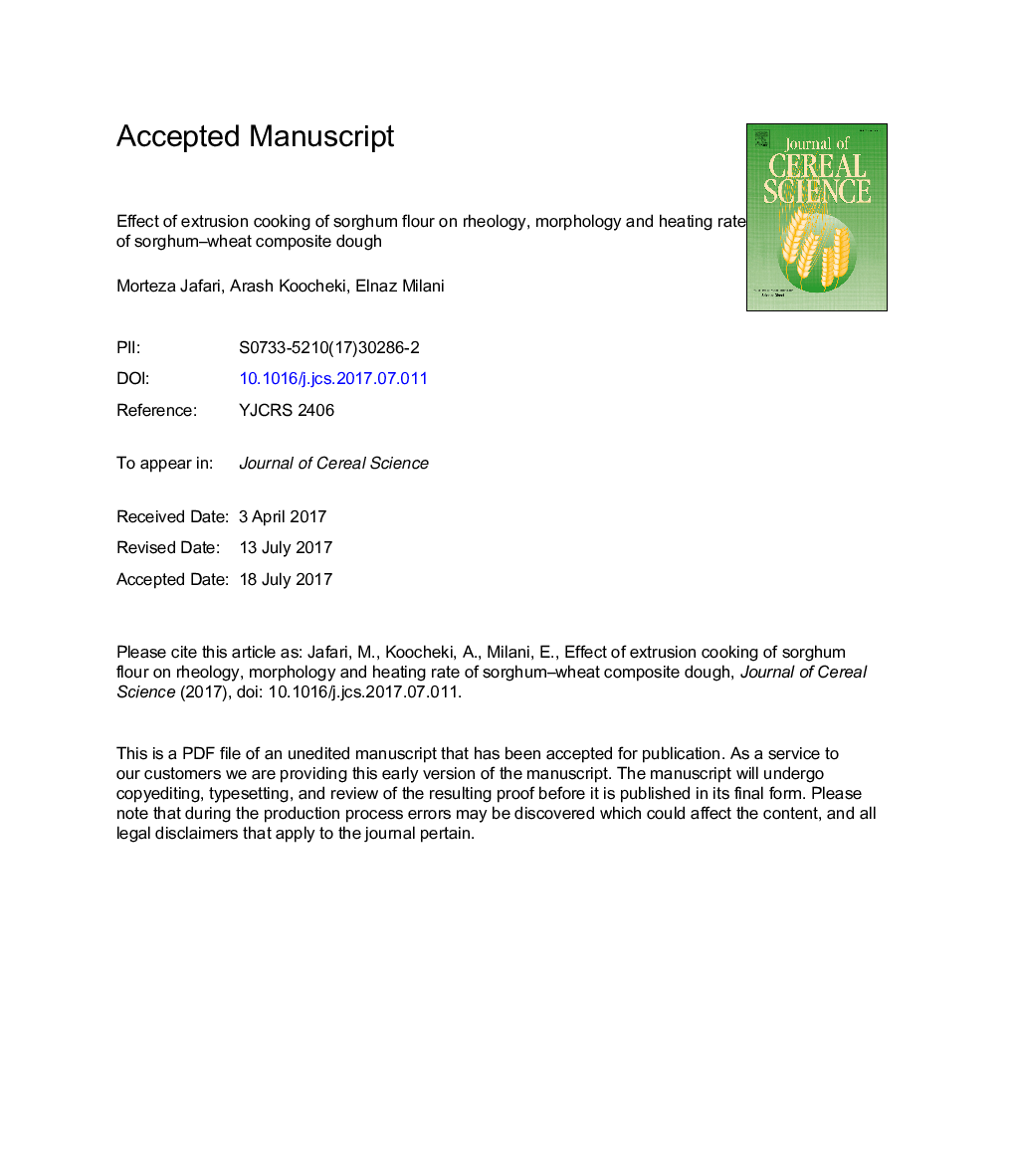| Article ID | Journal | Published Year | Pages | File Type |
|---|---|---|---|---|
| 5762401 | Journal of Cereal Science | 2017 | 30 Pages |
Abstract
Addition of a gluten-free flour such as sorghum has negative impact on the quality of wheat dough for bread making. One of the methods which can be used to promote the quality of sorghum-wheat composite dough is to extrude the sorghum flour before incorporation. In this regard, to produce a dough with appropriate bakery properties sorghum flour was extruded at 110 °C and 160 °C die temperature with 10%, 14% and 18% feed moisture. The effect of extruded sorghum flour incorporation (10%) on rheological (farinography and stress relaxation behavior), morphological and temperature profile of sorghum-wheat composite dough were evaluated. Extrusion cooking altered the sorghum-wheat composite dough properties through partial gelatinization of starch granules. Addition of extruded sorghum flour increased the water absorption and dough development time but it decreased the dough stability. Native sorghum-wheat composite dough showed viscoelastic liquid-like behavior whereas addition of sorghum flour extrudate changed dough to a more viscoelastic solid-like structure. Maxwell model was more appropriate than Peleg model to describe the viscoelasticity of the sorghum-wheat composite dough. Extrusion cooking decreased composite dough elasticity and viscosity. Sorghum extrudate increased the heating rate of composite dough crumb during baking. Addition of extruded sorghum flour formed a non-uniform and less compact dough structure. As a result, dough containing extruded sorghum flour had a good potential for producing a high-yielding bread in a short time of baking.
Related Topics
Life Sciences
Agricultural and Biological Sciences
Agronomy and Crop Science
Authors
Morteza Jafari, Arash Koocheki, Elnaz Milani,
